5x7-ledmatrix-shield
I managed to solder the 5x7-ledmatrix i wrote about some days ago to a arduino-proto-shield (without any injuries or short cuts - i am sooo proud :-))
now it looks really fancy (well the upper side at least)
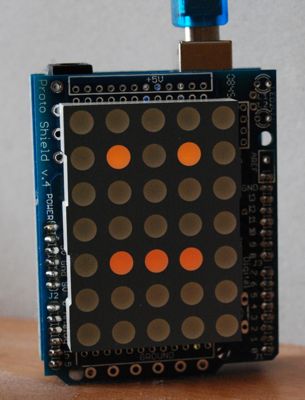
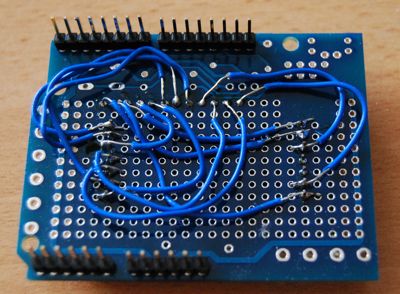
5x7 LED Matrix on my arduino
I just hooked up my 5x7 led matrix to an arduino :-)
very cool, i use the led matrix without any other parts as shown in the arduino playground
the next thing i want to do is solder it to one of my protoshields
(ignore the right part of the circuit, it is a currency regulator from another project, but i had no empty breadboards left :-))
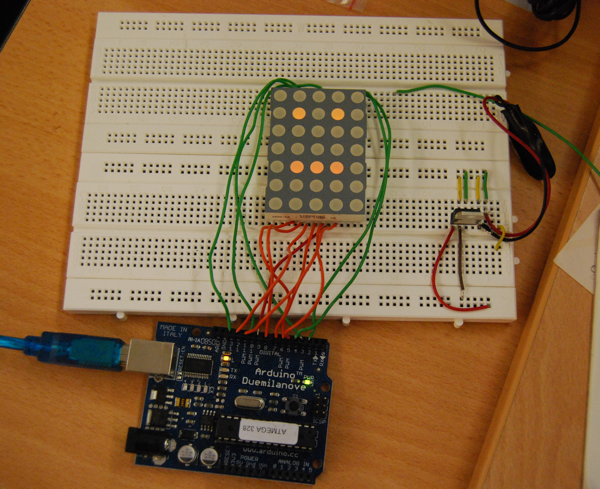
processing ical-flowers-2.0
I made a new version of the ical flowers sketch i wrote in dezember. This time it doesn't only show a flower for every event in my calender, it also shows
- the current weather (using the rubyweather library)
- the current temperature outside
- the min/max temperature outside
- the current temperature inside ( using my arduino i2c thermometer sketch)
- the sky color changes depending on the current time
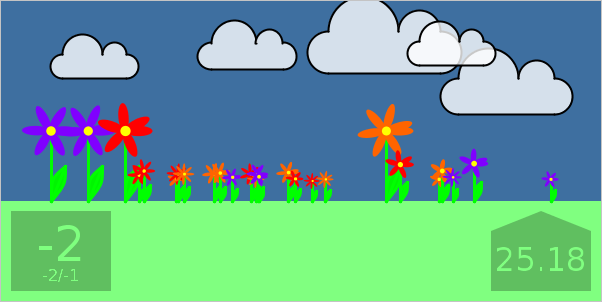
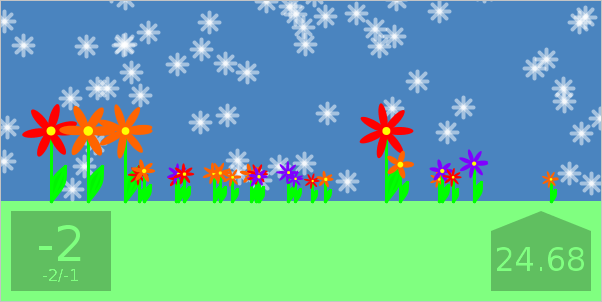
the system consists of a ruby-proxy, an arduino sketch and a processing sketch.
the ruby proxy starts a web-server on port 2000. It fetches the current weather using the rubyweather gem, fetches the events from the configured caldav calenders, and fetches the current temperature from the arduino using ruby-serial
the arduino sketch is basicaly the same as in this blog post. the only change is that the arduino only sends the temperature when the host sends a 'C' over the serial line
the processing sketch finally fetches the data via http from the proxy and displays it ( using my icap4p library. the screen is updated every 1/2 hour using the method described here
the code can be downloaded here
it's published under the LGPL
have fun :-)
read more ...i2c thermometer on arduino
I have hooked up my c-control i2c thermometer-module (link in german) to my arduino and wrote some code to read the current temperature in Celcius.
The module uses the maxim DS1631 chip.
The temperature is send as a 2 byte value using a 12 bit resolution. in the MSB the first bit is used as a sign bit, the other seven bits are represent the part before the comma, in the LSB the first 4 bits are used as the fractional part.
the code below doesn't handle negative values yet. i want to use it in my livingroom - i never ever want it to deal with negative values!
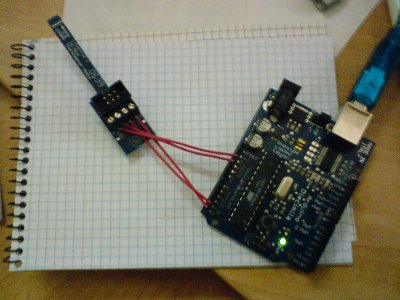
Training Bike Visualization
i wrote a processing sketch to visualize and record sessions on a training bike. To calculate the rotation-speed of my training bike i hooked up 2 reed-switches to my arduino and taped them to my training bike. Than i sticked a rare earth magnet on each pedal.
the processing sketch draws a small figure on a bike which is animated at the same speed as the bike.
the sketch also records the timestamps to a log file for later analysis.
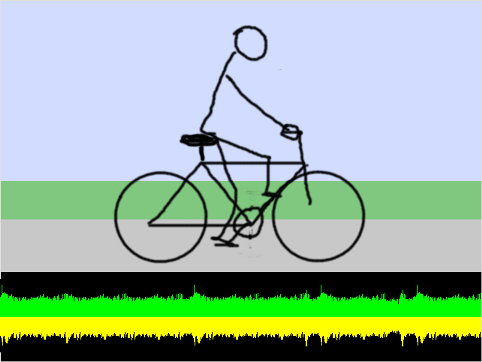
stinky emails
Last week a college came up with the theory, that nobody would have mails lying around in his inbox, if they would start to stink after a while. To check this, i came up with the "email-stinky-o-mat" i already have hacked together a small ruby script that calculates the "stinkycount" for a mailbox.
require 'net/imap'
require 'date'
imap = Net::IMAP.new('mailhost')
imap.login( 'user', 'password')
imap.select( "INBOX" )
stinkycount = 0
imap.search(["BEFORE", "#{(Date.today()-20).strftime( "%d-%b-%Y" )}" ]).each do |message_id|
stinkycount += 1
end
puts "#{stinkycount} stinking messages found"
this count can now be sent to a microcontroller (an arduino for example) which starts a fan, that is standing next to a reservior containing someting stinky - et voila (imagine drum roll here) - emails start to stink after 20 days :-)
read more ...



